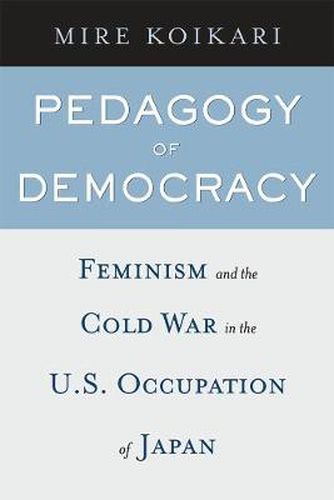Readings Newsletter
Become a Readings Member to make your shopping experience even easier.
Sign in or sign up for free!
You’re not far away from qualifying for FREE standard shipping within Australia
You’ve qualified for FREE standard shipping within Australia
The cart is loading…






Pedagogy of Democracy re-interprets the U.S. occupation of Japan from 1945 to 1952 as a problematic instance of Cold War feminist mobilization rather than a successful democratization of Japanese women as previously argued. By combining or using three fields of research–occupation, Cold War, and postcolonial feminist studies–and examining occupation records and other archival sources, Koikari argues that postwar gender reform was part of the Cold War containment strategies that undermined rather than promoted women’s political and economic rights. Koikari suggests that American and Japanese women leaders both participated in as well as resisted the ruling dynamics of race, gender, class, sexuality, and nation. Thus, Pedagogy of Democracy sheds new light on the complex and contradictory implications of Western feminist interventions in Asia. By applying a postcolonial feminist framework to American gender reform in the Cold War Asia-Pacific context–a subject hitherto understudied among feminist scholars–Pedagogy of Democracy reveals both the similarities and the differences between imperial feminisms in the nineteenth and twentieth centuries.
$9.00 standard shipping within Australia
FREE standard shipping within Australia for orders over $100.00
Express & International shipping calculated at checkout
Pedagogy of Democracy re-interprets the U.S. occupation of Japan from 1945 to 1952 as a problematic instance of Cold War feminist mobilization rather than a successful democratization of Japanese women as previously argued. By combining or using three fields of research–occupation, Cold War, and postcolonial feminist studies–and examining occupation records and other archival sources, Koikari argues that postwar gender reform was part of the Cold War containment strategies that undermined rather than promoted women’s political and economic rights. Koikari suggests that American and Japanese women leaders both participated in as well as resisted the ruling dynamics of race, gender, class, sexuality, and nation. Thus, Pedagogy of Democracy sheds new light on the complex and contradictory implications of Western feminist interventions in Asia. By applying a postcolonial feminist framework to American gender reform in the Cold War Asia-Pacific context–a subject hitherto understudied among feminist scholars–Pedagogy of Democracy reveals both the similarities and the differences between imperial feminisms in the nineteenth and twentieth centuries.